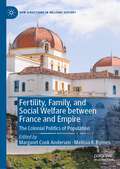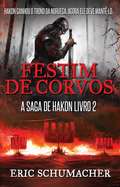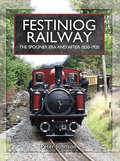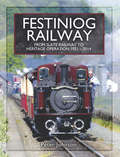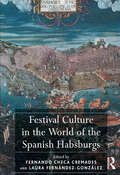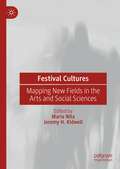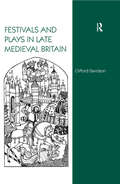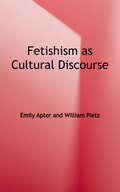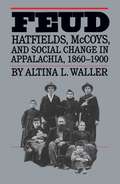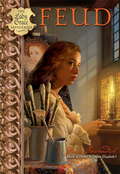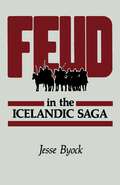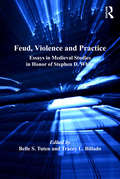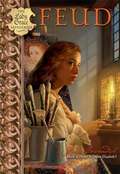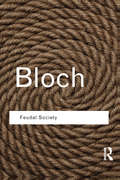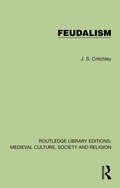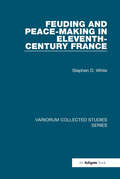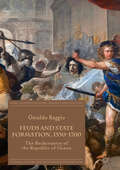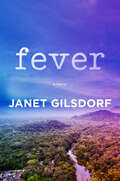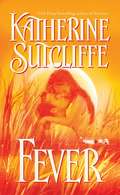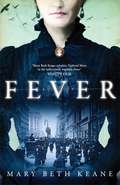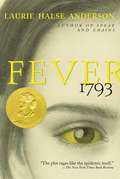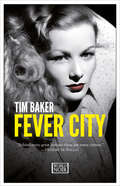- Table View
- List View
Fertility, Family, and Social Welfare between France and Empire: The Colonial Politics of Population (New Directions in Welfare History)
by Margaret Cook Andersen Melissa K. ByrnesThis edited volume focuses on social welfare and medicine within the French Empire and brings together important currents in both imperial history and the history of medicine. The book covers a broad period from the ‘first colonial empires’ that existed prior to 1830, the ‘new imperialism’ of the late nineteenth and early twentieth centuries, the process of decolonisation in the mid-twentieth century, and the ‘afterlives’ of colonial regimes in France and newly-independent states. Building on recent scholarship, this volume examines the extension of imperialism into the post-colonial period. The chapters examine a range of topics developing our understanding of the reasons why colonial states saw the family as a site for biopolitical intervention. The authors argue that experts built a racialised body of knowledge about colonial populations through census data and medical understandings of problems such as child mortality and infertility. They show that by analysing and compiling data on fertility, population growth (or decline), and health, this fuelled interventions designed to ensure a stable workforce, and that protecting children and mothers, vaccinating vulnerable populations, and creating modern, sanitary housing were all initiatives also aimed at serving larger goals of preserving colonial rule. Finally, the book shows that social welfare projects during the French Empire reflected concerns about race, differential fertility, and migration that continued well after decolonisation.
Festim de Corvos
by Eric SchumacherHakon Haraldsson volta nesta aventura histórica de ritmo acelerado ambientada na Era Viking da Noruega. É 935 A.D. e Hakon Haraldsson acaba de tomar o Alto Assento do Norte de seu cruel irmão, Erik Bloodaxe. Agora, ele deve lutar para mantê-lo. A terra faminta dos dinamarqueses está pressionando pelo sul para testar Hakon antes que ele possa consolidar sua lei. Ao leste, os povos das Uplands estão fazendo seus próprios planos para tomar o trono. Não auxilia o fato de Hakon estar comprometido com seu sonho de Crisianizar seu povo - um sonho que seus conterrâneos não partilham e lutarão para resistir. Conforme seus inimigos movem-se e seu reino começa a desmoronar, Hakon e seu bando de guerreiros juramentados devem suportar em Festim de Corvos, a sequência fascinante de O Martelo de Deus. Comentários: ...Mais de 250 páginas sentando na beira de seu assento... - Dads & Dragons - ...uma leitura excitante sobre um rei muito jovem tentando manter um reino ruindo. - Historical Novel Society- Uma história envolvente de um homem encarando uma situação cada vez mais impossível. - Historical Fiction Review -
Festiniog Railway: A View From The Past (Narrow Gauge Railways Ser.)
by Peter JohnsonFestiniog Railway 1836–2014 describes the history of the worlds first steam-operated narrow gauge railway to carry passengers. It covers the history of the railway from its beginnings as a horse-worked tramroad in 1836, through its technical developments with the introduction of steam locomotives, Fairlie articulated locomotives and bogie carriages through its twentieth-century decline, to closure in 1946, and then to the preservation era and its development as a major twenty-first-century tourist attraction.Built to serve the extensive slate industry in the Ffestiniog area of North Wales by carrying slate from the quarries to the port at Porthmadog, from 1865 the railway also operated a passenger service to serve the local community, which also attracted tourists. Closed in 1946 the railway was revived in stages from 1955, when a prolonged compensation claim was mounted against a major state-owned company for land taken to build a power station. Volunteers from all over the world came together to restore and operate this important piece of world industrial heritage, including the construction of the 2 mile deviation needed to bypass the power station. Services were resumed between Porthmadog and Blaenau Ffestiniog in 1982.The Festiniog Railway runs through some of the most beautiful countryside in North Wales, with spectacular views of mountains and lakes. The railway also has a very impressive collection of modern and historic motive power and rolling stock. It is one of the most successful tourist attractions in Wales and is one of the most important industrial history sites in the world.
Festiniog Railway: A View From The Past (Narrow Gauge Railways Ser.)
by Peter JohnsonOpened in 1836 as a horse tramway using gravity to carry slate from Blaenau Ffestiniog to Porthmadog, by the 1920s the Festiniog Railway had left its years of technical innovation and high profits long behind. After the First World War, the railways path led inexorably to closure, to passengers in 1939 and goods in 1946.After years of abandonment, visionary enthusiasts found a way to take control of the railway and starting its restoration in 1955. Not only did they have to fight the undergrowth, they also had to fight a state-owned utility which had appropriated a part of the route. All problems were eventually overcome and a 2 mile deviation saw services restored to Blaenau Ffestiniog in 1982.Along the way, the railway found its old entrepreneurial magic, building new steam locomotives and carriages, and rebuilding the Welsh highland Railway, to become a leading 21st century tourist attraction.Historian Peter Johnson, well known for his books on Welsh railways, has delved into the archives and previously untapped sources to produce this new history, a must-read for enthusiasts and visitors alike.The Festiniog Railways pre–1921 history is covered in Peter Johnsons book, Festiniog Railway the Spooner era and after 1830–1920, also published by Pen & Sword Transport.
Festival Culture in the World of the Spanish Habsburgs
by Laura Fernández–González Fernando CremadesIn recent years, there has been an increasing interest in Early Modern Festivals. These spectacles articulated the self-image of ruling elites and played out the tensions of the diverse social strata. Responding to the growing academic interest in festivals this volume focuses on the early modern Iberian world, in particular the spectacles staged by and for the Spanish Habsburgs. The study of early modern Iberian festival culture in Europe and the wider world is surprisingly limited compared to the published works devoted to other kingdoms at the time. There is a clear need for scholarly publications to examine festivals as a vehicle for the presence of Spanish culture beyond territorial boundaries. The present books responds to this shortcoming. Festivals and ceremonials played a major role in the Spanish world; through them local identities as well as a common Spanish culture made their presence manifest within and beyond the peninsula through ephemeral displays, music and print. Local communities often conflated their symbols of identity with religious images and representations of the Spanish monarchy. The festivals (fiestas in Spanish) materialized the presence of the Spanish diaspora in other European realms. Royal funerals and proclamations served to establish kingly presence in distant and not so distant lands. The socio-political, religious and cultural nuances that were an intrinsic part of the territories of the empire were magnified and celebrated in the Spanish festivals in Europe, Iberia and overseas viceroyalties. Following a foreword and an introduction the remaining 12 chapters are divided up into four sections. The first explores Habsburg Visual culture at court and its relationship with the creation of a language of triumph and the use of tapestries in festivals. The second part examines triumphal entries in Madrid, Lisbon, Cremona, Milan, Pavia and the New World; the third deals with the relationship between religion and the empire through the examination of royal funerals, hagiography and calendric celebrations. The fourth part of the book explores cultural, artistic and musical exchange in Naples and Rome. Taken together these essays contribute further to our growing appreciation of the importance of early-modern festival culture in general, and their significance in the world of the Spanish Habsburgs in particular.
Festival Cultures: Mapping New Fields in the Arts and Social Sciences
by Maria Nita Jeremy H. KidwellThis book brings together interdisciplinary research from the fields of Anthropology, Sociology, Archaeology, Art, History and Religious Studies, showing the necessity of a transdisciplinary and diachronic approach to examine the last half-century of modern arts and performance festivals. The volume focuses on new theoretical and methodological approaches for the examination of festivals and festival cultures, both the Burning Man festival in Nevada's Black Rock Desert and burner culture in Europe. The editors argue that festival cultures are becoming values-inflected global forms of travel, dwelling, festivity, communication, and social organisation that are transforming contemporary cultures and have significant political capital.
Festivals and Plays in Late Medieval Britain
by Clifford DavidsonBased in records and iconography, this book surveys medieval festival playing in Britain more comprehensively than any other work to date. The study presents an inclusive view of the drama in the British Isles, from Kilkenny to Great Yarmouth, from Scotland to Cornwall. It offers detailed readings of individual plays-including the York Creed Play, Pentecost and Corpus Christi plays and the little studied Bodley plays, among others - as well as a summary of what is known of their production. Clifford Davidson here extends the usual chronological range to include work typically categorized as early modern, enabling a juxtaposition of earlier plays with later plays to yield a better understanding of both. Complementing documentary evidence with iconographic detail and citation of music, he pinpoints a number of common misconceptions about medieval drama. By organizing the study around the rituals of the liturgical seasons, he clarifies the relationship between liturgical feast and dramatic celebration.
Fetishism As Cultural Discourse
by Emily Apter William PietzFetishism is a term widely disseminated in literary and cultural studies. It carries a variety of generic meanings. Most of these derive to some degree from Marxist and psychoanalytic discourses, where the term fetishism has technical significance. This book will engage and challenge a wide audience of academic and nonacademic readers, including specialists and students in the fields of anthropology, history, literature, film, psychoanalysis, visual arts, feminist theory, Marxian criticism, and cultural studies.
Feu De Sang
by Richard StookerFeu de Sang Le frère d'Elena, Ion, visite sa maison aujourd'hui. Mais le Boyar a déjà coupé la gorge d'Ion et l'a enterré dans un sol non consacré. Leur mère sait qu'Ion revient ce soir pour sa sœur. Peut-elle convaincre le prêtre de lui accorder l'absolution? Ou le Boyar pour protéger Elena du frère qui a péché avec elle même de son vivant? Elena veut-elle la protection de son frère? Au moyen Âge . . . Les vampires ressemblaient plus à des zombies de films qu'à des stars de cinéma... Les vampires ne pensaient pas introspectivement à la signification de leur existence... Les vampires ne possédaient pas d'âmes... Les vampires n'agissaient pas comme des garçons preppie avec des crocs... Les vampires ne sont pas sortis ensemble, encore moins stables... Les vampires ne pouvaient pas contrôler leur soif de sang - et ne le voulaient pas... Les vampires vivaient dans des cimetières... Les vampires avaient l'air moche, pas «beaux»... Les vampires sentaient mauvais. Ils n'ont pas brillé... Si vous pouvez gérer un vampire qui est plus qu'un simple `` mauvais garçon '' noir mort-vivant - ... Si vous pouvez gérer un vampire qui ne veut rien de la mort mais du sang des vivants - ... Si vous pouvez gérer la soif de sang mêlée au désir illicite d'une jeune fille du seul homme qui ait jamais montré sa gentillesse. . .
Feud
by Altina L. WallerThe Hatfield-McCoy feud, the entertaining subject of comic strips, popular songs, movies, and television, has long been a part of American folklore and legend. Ironically, the extraordinary endurance of the myth that has grown up around the Hatfields and McCoys has obscured the consideration of the feud as a serious historical event. In this study, Altina Waller tells the real story of the Hatfields and McCoys and the Tug Valley of West Virginia and Kentucky, placing the feud in the context of community and regional change in the era of industrialization.Waller argues that the legendary feud was not an outgrowth of an inherently violent mountain culture but rather one manifestation of a contest for social and economic control between local people and outside industrial capitalists -- the Hatfields were defending community autonomy while the McCoys were allied with the forces of industrial capitalism. Profiling the colorful feudists "Devil Anse" Hatfield, "Old Ranel" McCoy, "Bad" Frank Phillips, and the ill-fated lovers Roseanna McCoy and Johnse Hatfield, Waller illustrates how Appalachians both shaped and responded to the new economic and social order.
Feud
by Lady Grace CavendishThere is much excitement at Court as the famous painter Levina Teerlinc arrives to paint the Queen's portrait. The Maids of Honor are recruited to help entertain the Queen during the sittings, and to pose for the painter while the Queen is busy. They love being in the studio but have to beware as deadly poisons are used in some of the paints! One of Lady Grace's fellow Maids of Honor, Carmina, begins to act rather strangely--she seems confused and always tired. Her family has recently been involved in a feud with another noble family after her father was killed in a jousting tournament--is it possible that Carmina is being poisoned? Could the painter or her assistants be involved? Can Grace solve the mystery and discover the truth behind the strange happenings at Court?From the Hardcover edition.
Feud in the Icelandic Saga
by Jesse L. ByockFeud stands at the core of the Old Icelandic sagas. Jesse Byock shows how the dominant concern of medieval Icelandic society—the channeling of violence into accepted patterns of feud and the regulation of conflict—is reflected in the narrative of the family sagas and the Sturlunga saga compilation. This comprehensive study of narrative structure demonstrates that the sagas are complex expressions of medieval social thought.
Feud, Violence and Practice: Essays in Medieval Studies in Honor of Stephen D. White
by Tracey L. BilladoThis collection presents an innovative series of essays about the medieval culture of Feud and Violence. Featuring both prominent senior and younger scholars from the United States and Europe, the contributions offer various methods and points of view in their analyses. All, however, are indebted in some way to the work of Stephen D. White on legal culture, politics, and violence. White's work has frequently emphasized the importance of careful, closely focused readings of medieval sources as well as the need to take account of practice in relation to indigenous normative statements. His work has thus made historians of medieval political culture keenly aware of the ways in which various rhetorical strategies could be deployed in disputes in order to gain moral or material advantage. Beginning with an essay by the editors introducing the contributions and discussing their relationships to Stephen White's work, to the themes of the volume, to each other, and to medieval and legal studies in general, the remainder of the volume is divided into three thematic sections. The first section contains papers whose linking themes are violence and feud, the second section explores medieval legal culture and feudalism; whilst the final section consists of essays that are models of the type of inquiry pioneered by White.
Feud: The Lady Grace Mysteries, Book 6
by Patricia Finney Grace CavendishThere is much excitement at Court as the famous painter Levina Teerlinc arrives to paint the Queen's portrait. The Maids of Honor are recruited to help entertain the Queen during the sittings, and to pose for the painter while the Queen is busy. They love being in the studio but have to beware as deadly poisons are used in some of the paints! One of Lady Grace's fellow Maids of Honor, Carmina, begins to act rather strangely--she seems confused and always tired. Her family has recently been involved in a feud with another noble family after her father was killed in a jousting tournament--is it possible that Carmina is being poisoned? Could the painter or her assistants be involved? Can Grace solve the mystery and discover the truth behind the strange happenings at Court?
Feudal America: Elements of the Middle Ages in Contemporary Society
by Vladimir Shlapentokh Joshua WoodsDo Americans live in a liberal capitalist society, where evenhanded competition rules the day, or a society in which big money, private security, and personal relations determine key social outcomes? Vladimir Shlapentokh and Joshua Woods argue that the answer to these questions cannot be found among the conventional models used to describe the nation. Offering a new analytical tool, the authors present a provocative explanation of the nature of contemporary society by comparing its essential characteristics to those of medieval European societies. Their feudal model emphasizes five elements: the weakness of the state and its inability to protect its territory, guarantee the security of its citizens, and enforce laws; conflicts and collusions between and within organizations that involve corruption and other forms of illegal or semilegal actions; the dominance of personal relations in political and economic life; the prevalence of an elitist ideology; and the use of private agents and organizations for the provision of safety and security. Feudal America urges readers to suspend their forward-thinking and futurist orientations, question linear notions of social and historical progression, and look for explanations of contemporary social problems in medieval European history.
Feudal Society (Routledge Classics)
by Marc BlochMarc Bloch said that his goal in writing Feudal Society was to go beyond the technical study a medievalist would typically write and ‘dismantle a social structure.’ In this outstanding and monumental work, which has introduced generations of students and historians to the feudal period, Bloch treats feudalism as living, breathing force in Western Europe from the ninth to the thirteenth century. At its heart lies a magisterial account of relations of lord and vassal, and the origins of the nature of the fief, brought to life through compelling accounts of the nobility, knighthood and chivalry, family relations, political and legal institutions, and the church. For Bloch history was a process of constant movement and evolution and he describes throughout the slow process by which feudal societies turned into what would become nation states. A tour de force of historical writing, Feudal Society is essential reading for anyone interested in both Western Europe’s past and present. With a new foreword by Geoffrey Koziol
Feudalism (Routledge Library Editions: Medieval Culture, Society, & Religion)
by J. S. CritchleyOriginally published in 1978, this global comparative survey investigates the political, social and economic features of feudalism. While Europe remains its point of departures, it considers many other societies and their history, such as China and Japan, Ethiopia and Latin America, explaining what about them is described as feudal and why. The book spans a period ranging from Confucius and Herodotus to Mao Tse-tung. It also surveys and compares different instances of such phenomena as vassalage and military lordship, feudal kingship, clientage and patronage, serfdom, debt bondage and the feudalism which has so often been the target of modern reformers and revolutionaries.
Feuding and Peace-Making in Eleventh-Century France (Variorum Collected Studies)
by Stephen D. WhiteThe essays in this volume discuss feuding and peacemaking in France during a period extending from the mid-10th to the early 12th century. They treat various aspects of so-called dispute-processing - a term coined by legal anthropologists to refer to the political processes and discursive practices through which conflict is mediated politically, socially, legally, and culturally. Each of the essays can be read both as one element in a larger critique of the theory that a 'feudal revolution' in c.1000 initiated a century-long era of 'feudal anarchy' in France, and as a study on a particular topic in medieval European legal and political history. These include feuding, violence, the emotional dimensions of conflicts among élites, the role of norms and normative argument in disputes, the uses of unilateral ordeals and judicial duels in litigation, and alternative strategies for terminating disputes.
Feuds and State Formation, 1550–1700: The Backcountry of the Republic of Genoa (Early Modern History: Society and Culture)
by Osvaldo RaggioThis book re-evaluates the role of local agency and provides a new perspective to the political, social and cultural history of state formation, taking a microhistorical approach and through close analysis of archival sources between 1550 to 1700. The backcountry of the Republic of Genoa is a laboratory for gauging the weight and significance of two elements which, according to Charles Tilly and other scholars, have characterized the construction of the modern state: judicial administration and fiscal extraction. The instruments employed in this respect were arbitration and compensation. Interactions between center and periphery occurred within a stratified and discontinuous fabric of fluid jurisdictions and segmented residential topographies, which constituted spaces of mediation. Such spaces were generated by conflicts between kin groups (feuds and factional alignments) and managed both by Genoese officials and by local notables and notaries, who translated a whole set of local practices into judicial procedures. This book offers a rich contextualization of material life, family relationships, economic activities, and power struggles in a corner of the Mediterranean world that was extremely important, but about which very little has been published in English.
Fever
by Janet GilsdorfFrom acclaimed author and Professor Emerita of Pediatrics and Epidemiology Janet Gilsdorf comes a captivating and timely novel about a young doctor's quest to uncover the cause of a mysterious disease killing young children, and the race to find a cure.In 1984, in the small Brazilian village of Promissão, a young child begins to fuss, her eyes turning pink and her skin flushed with heat. Four days later, she's dead.Sidonie Royal, an accomplished physician and scientist, arrives in the small Brazilian village of Promissão to investigate and hopefully cure this insidious new disease. With several young children already dead, and more getting sick by the day, the stakes cannot get any higher.But Sid's personal life is also in flux, as she struggles to balance a complicated relationship with her boyfriend, Paul, pressure to start a family from her well-meaning mother, conflict with her surly but brilliant coworker named Eliot, and a budding romantic attraction to her doctoral student's twin brother. As Sid relentlessly pursues an explanation for the disease, the village's physician calls in the Global Health Agency, triggering a scientific race that spans two continents and becomes increasingly defined by personal stakes.Set against the backdrop of the early days of the AIDS epidemic, Fever is about finding courage in the face of the unknown, the lasting power of community, and one woman's challenge to prove herself as she aims to make a life-saving—and career-defining—discovery.
Fever
by Katherine SutcliffeFrom "one of the most powerful voices in the romantic genre" (Romantic Times) comes a tale set in the steamy bayous of the American South. Steeped in sensuality and lavish prose, it is Katherine Sutcliffe's Þnest novel to date. Fever Orphaned and penniless, Juliette Broussard is overjoyed when her godfather, Max Hollinsworth, plucks her from an isolated French convent. Then she discovers his plan for her to marry his shiftless son Tylor so that he can acquire her family's dilapidated sugar cane plantation, Belle Jarod. Juliette's dreams are of rebuilding her once-glorious home and she wants nothing to do with marriage -- until she comes face-to-face with a blue-eyed temptation who unleashes the same passions that drove her mother, Louisiana's most beautiful and notorious prostitute, to destroy every man who loved her. Chantz Boudreaux, Max's bastard first-born, has one desire: for his father to acknowledge him. But the moment he drags Juliette's naked body from the flood-driven Mississippi, he is swept into a liaison that unsettles his priorities and threatens his life. Soon their forbidden passion burns like a fever. As they struggle to revive Belle Jarod, betrayal and a deadly plague threaten everything they hold dear.
Fever
by Mary Beth KeaneA bold, mesmerizingly told story about the woman known as 'Typhoid Mary' and once described as 'the most dangerous woman in America'.They called her Typhoid Mary. They believed she was sick, that she was passing typhoid fever from her hands to the food that she served. They said she should have known. But Mary wasn't sick. She hadn't done anything wrong. She wasn't arrested right away. There were warnings. Requests. And when she was finally taken, she did not go quietly. Branded a murderer and condemned by press and public alike, Mary continued to fight for her freedom, no matter the cost. Mary Beth Keane's fictional account presents us with a very cleverly wrought conundrum: was Mary Mallon a selfish monster or a hounded innocent?'Mary Beth Keane is one of those gifted young writers who helps me believe --still! --in the power of literature' Colum McCann'Typhoid Mary is a sensational subject, but the strength of this novel is that it bears patient witness to an ordinary human life. Engrossing and wonderfully compassionate' Shelley Harris, Richard & Judy bestselling author of Jubilee'Keane has very cleverly put flesh on the bogeywoman whom the press dubbed Typhoid Mary ...Disturbing and compelling' The Times'Medical history's ultimate bad girl was Mary Mallon, the Irish cook who refused to concede that she might be a typhoid carrier, in spite of the trail of death that followed her. A fascinating turn of the last century-set medical cat-and-mouse story, Mary Beth Keane's Fever summons sympathy for the contrary personality at its center, a self-made immigrant grappling with work and love, dignity and denial' Vogue'Mary Beth Keane inhabits Typhoid Mary in the infectiously readable Fever' Vanity Fair
Fever
by SutcliffeFrom "one of the most powerful voices in the romantic genre" (Romantic Times) comes a tale set in the steamy bayous of the American South. Steeped in sensuality and lavish prose, it is Katherine Sutcliffe's Þnest novel to date. Fever Orphaned and penniless, Juliette Broussard is overjoyed when her godfather, Max Hollinsworth, plucks her from an isolated French convent. Then she discovers his plan for her to marry his shiftless son Tylor so that he can acquire her family's dilapidated sugar cane plantation, Belle Jarod. Juliette's dreams are of rebuilding her once-glorious home and she wants nothing to do with marriage -- until she comes face-to-face with a blue-eyed temptation who unleashes the same passions that drove her mother, Louisiana's most beautiful and notorious prostitute, to destroy every man who loved her. Chantz Boudreaux, Max's bastard first-born, has one desire: for his father to acknowledge him. But the moment he drags Juliette's naked body from the flood-driven Mississippi, he is swept into a liaison that unsettles his priorities and threatens his life. Soon their forbidden passion burns like a fever. As they struggle to revive Belle Jarod, betrayal and a deadly plague threaten everything they hold dear.
Fever 1793
by Laurie Halse AndersonIt's late summer 1793, and the streets of Philadelphia are abuzz with mosquitoes and rumors of fever. Down near the docks, many have taken ill, and the fatalities are mounting. Now they include Polly, the serving girl at the Cook Coffeehouse. But fourteen-year-old Mattie Cook doesn't get a moment to mourn the passing of her childhood playmate. New customers have overrun her family's coffee shop, located far from the mosquito-infested river, and Mattie's concerns of fever are all but overshadowed by dreams of growing her family's small business into a thriving enterprise. But when the fever begins to strike closer to home, Mattie's struggle to build a new life must give way to a new fight-the fight to stay alive.
Fever City
by Tim Baker&“Puts a new twist on the Kennedy assassination . . . [a] remarkable first novel . . . delights in sex, hypocrisy and political conspiracy&” (The Washington Post). If you took James Ellroy at his most imaginative and Oliver Stone at his most conspiratorial, and mixed them up in a supersized martini shaker, you would produce the vivid writing, explosive events, and irresistible entertainment of Fever City, a Shamus Award finalist. The story kicks off in 1960 Los Angeles, with the daring kidnapping of the child of one of America&’s richest men. It then darts back and forth between a private detective&’s urgent search for the child, the saga of a notorious hit man in the days leading to JFK&’s assassination, and the modern-day story of a skeptical journalist researching the still-active conspiracy theories of the 1950s and &’60s, with the aim of debunking them. Just as the detective discovers that the kidnapping is a crime much larger than he imagined, and the hit man finds himself caught in a web that is astonishingly complex, the journalist discovers—to his horror, dismay, and even his jeopardy—that the conspiracy theories might well be true. &“In this ambitious debut Baker gives us a bare-knuckle take on the president&’s murder and adds two other plotlines, connecting them solidly with the equivalent of a jab-jab-cross combination.&” —The New York Times Book Review &“Hits you like a cannonball . . . A turbo-charged, beautifully written noir, Fever City is one of those mind-blowingly ambitious debuts that only comes along once in a great while.&” —Stav Sherez, author of Eleven Days
